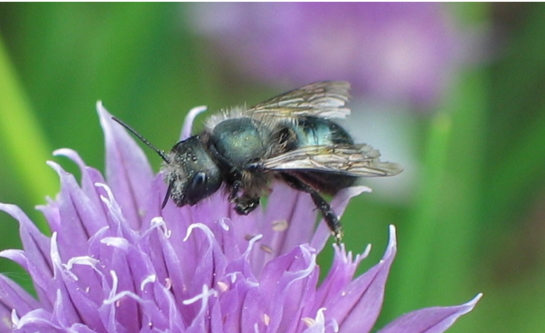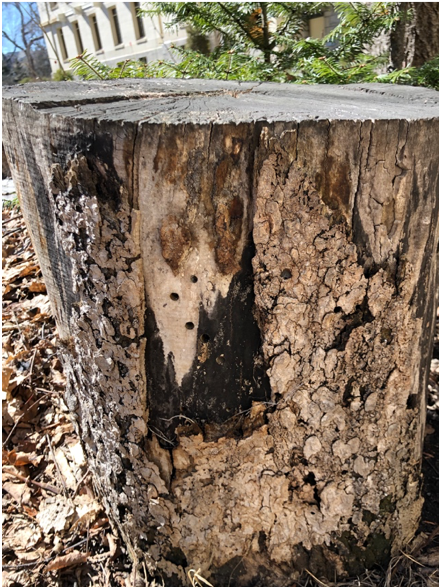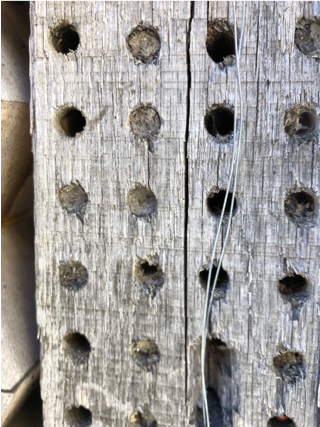Making Mason Bee Homes
About Mason Bees

Mason bees are solitary insects that are efficient pollinators. Unlike honeybees, they do not live in colonies. Females look for a small hole in a tree to lay their eggs. They collect pollen and nectar from flowers to put in the hole, lay an egg and then plug the hole with mud. The females produce one or two eggs each day in the spring. As they deposit the eggs in holes, multi-layers or cells are formed – an egg with pollen, then mud, another egg with pollen, then mud, etc. The bee larvae hatch and eat the pollen until they are ready for the next stage. They then spin a cocoon while still in the sealed cell. The bees become adults near the end of summer and wait in their cell all winter, hatching in the spring, to repeat the cycle. Males hatch first, followed by females. After mating, the males die.
The Need for Mason Bee Houses

Mason bees can be effective pollinators of the plants around our homes once encouraged to nest nearby. With the loss of many bee hives in Quebec because of an imported mite in recent years, their importance as pollinators is obvious. Mason bees do not make their own holes. They need to find existing holes, usually created by beetle larvae in trees or in hollow plant stems. Creating suitable artificial nesting sites can be an educational and simple activity for the family and will attract these mild-mannered bees.
Mason Bee House Placement
Mason bee houses should be placed at least three feet above the ground. They can be securely attached to trees, placed on stakes in the garden or attached to fence posts. Try to face the houses in a southeastern direction to catch the morning sun. Any area close to moist soil that can be used by the female to seal the egg chambers is beneficial.
Caring for the House

Mason bees emerge from the chambers in the spring. They are docile bees so it is easy to watch the process. After about six weeks, active nesting stops and the adult bees gradually die. During the summer months, mason bee larvae in the cell transform into adults and stay in the cocoons. In early fall (September or October), carefully move occupied houses to a shed or unheated garage to protect them from predators such as woodpeckers. The following spring (April), the houses should be set out again so the bees can hatch from their sealed cell. Mason bees will clean out and reuse cells, although they will occupy new holes if given the choice.
Safety
Mason bees are not aggressive and they can be observed at close distances. Male bees cannot sting while females will only sting if handled or trapped under clothing. The sting is said to be the same as a mosquito bite.
Mason Bee House Construction

Mason bees prefer nesting in holes drilled in wood to any other material. Nesting blocks can be made using untreated lumber (2”x 4” or 4” x 4” works well or large tree branches). Hardwood is best as the wood fibers are less likely to lift when damp and block the hole. Holes are drilled 6-7 mm (1/4” – 5/16”) in diameter and distanced at centers of 18 mm (3/4”) apart. Drill the hole 7-8 cm (3-3.5”) in depth towards the back of the block. Attach overlapping roof to protect bees from the sun and rain. Smaller and shallower holes produce more male bees, reducing the reproductive potential of the population.
More information:
YouTube Video about mason bees:
Ordering mason bee homes – Lee Valley

